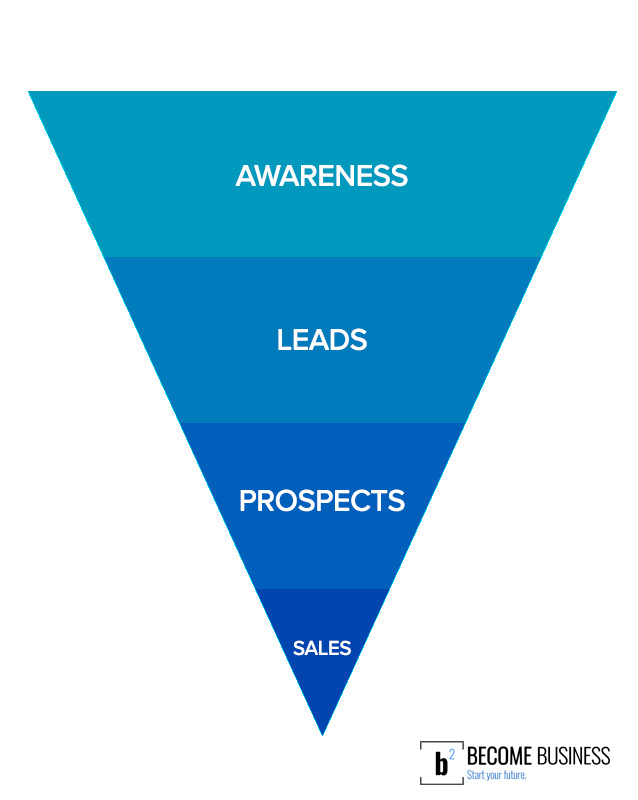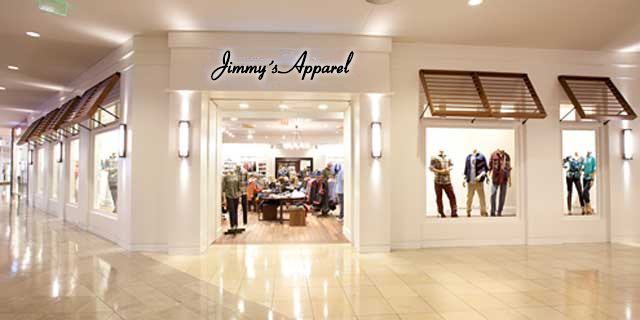Probably the most important piece to building a successful business is your sales funnel.
You will be surprised to hear the amount of small businesses that just don’t have a sales funnel in place.
They’ve had success because they got picked up by an influencer, traffic came in and they were convinced they had made it.
What happens? One month in when the traffic pipe begins to weaken, their business just stops.
Why? Simple, bad sales funnel (if any).
The Sales Funnel Basics
Although everyone is certain their product speaks for itself, they still need to send in a fair amount of traffic for things to kick off.

All sales funnels break down into a minimum of four stages:
Awareness – People finding out about you, either through marketing, word of mouth, events etc.
Leads – People who visit you.
Prospects – Someone who shows interest of some kind.
Sales – Actual paying customers.
The best way to explain the sales funnel is with an example.
Jimmy’s Apparel – Our Fake Example Store

Let’s say you open a clothing store in a shopping centre. Not e-Commerce, a good old fashion physical store.
How does the sales funnel apply to you:

Awareness – Are the people who walk by your store and look at it, they aren’t doing anything they are just interested in this new store.
Leads – People who walk in, browse around and maybe pick up a piece of clothing.
Prospects – People who pick up a piece of clothing, ask a sales rep for their size and go try it on.
Sales – People who actually make a payment at the till.
Every single business on earth has a sales funnel. If you’re selling software, you have a sales funnel.
That’s fantastic, why is this important?
Your sales funnel as primitive as it may seem gives you a lot of valuable information when you add measurement & metrics to it.
For example, back to our clothing shop Jimmy’s apparel:
Let’s assume you pay $5,000 per month in rent. On average 1000 people enter your store and 10 people buy something a month.

Conversion rate
If 1000 enter your store and only 10 people buy something, you’ve got a 1% conversion rate (10/1000).
Cost Per Lead (CPL)
If your rent at the shopping mall is $5,000 per month for your prime location and you get 1000 leads, you’re paying $5 per lead (5000/1000).
Customer Acquisition Cost (CAC)
A lead may be $5, but really out of the 1000 people that enter your store only 10 of them bought something, so you’re paying 5,000 / 10 = $500 per customer.
Errrr Should we tell Jimmy to shut down?
Wow. $500 per customer? Would it be better to move location and save the 450 per customer? Well, we don’t know. We’re missing two more important factors.
We need to know people spending habits:

Average Order Value (AOV)
If you monitor your 10 purchases and find on average people spend $500 per sale, that’s your average order value.
Customer Lifetime Value (LTV/CLTV)
If you run Jimmy’s Apparel for a year and you see that the same customers over the year end up spending $10,000, your life time value of the customer is $10,000.
Starting to make sense?
Now, forgive me as these metrics are made up and not accurate – I’d definitely filter out top performers and low performers for more realistic averages, I’d monitor time to purchase too, but I hope you get the point.
With this data, you can now make valuable decisions.
My investment for my customer is $500 per customer. But they end up spending $10,000 (LTV) in one year so provided my profit margin is decent, I’m looking quite good.
I want to advertise online, how does this matter?
It’s the same thing. Your funnel concept is exactly the same. Your awareness phase is your Facebook marketing campaign, your leads are people who you capture email addresses from, your prospects are ones who take desired actions and your sales are actual sales you make.
If you lose 90% of your users in the checkout phase, ensure you can fire abandoned cart emails, really narrow down on the MoFu (Middle of the funnel) portion of your business and why people are stepping away!
